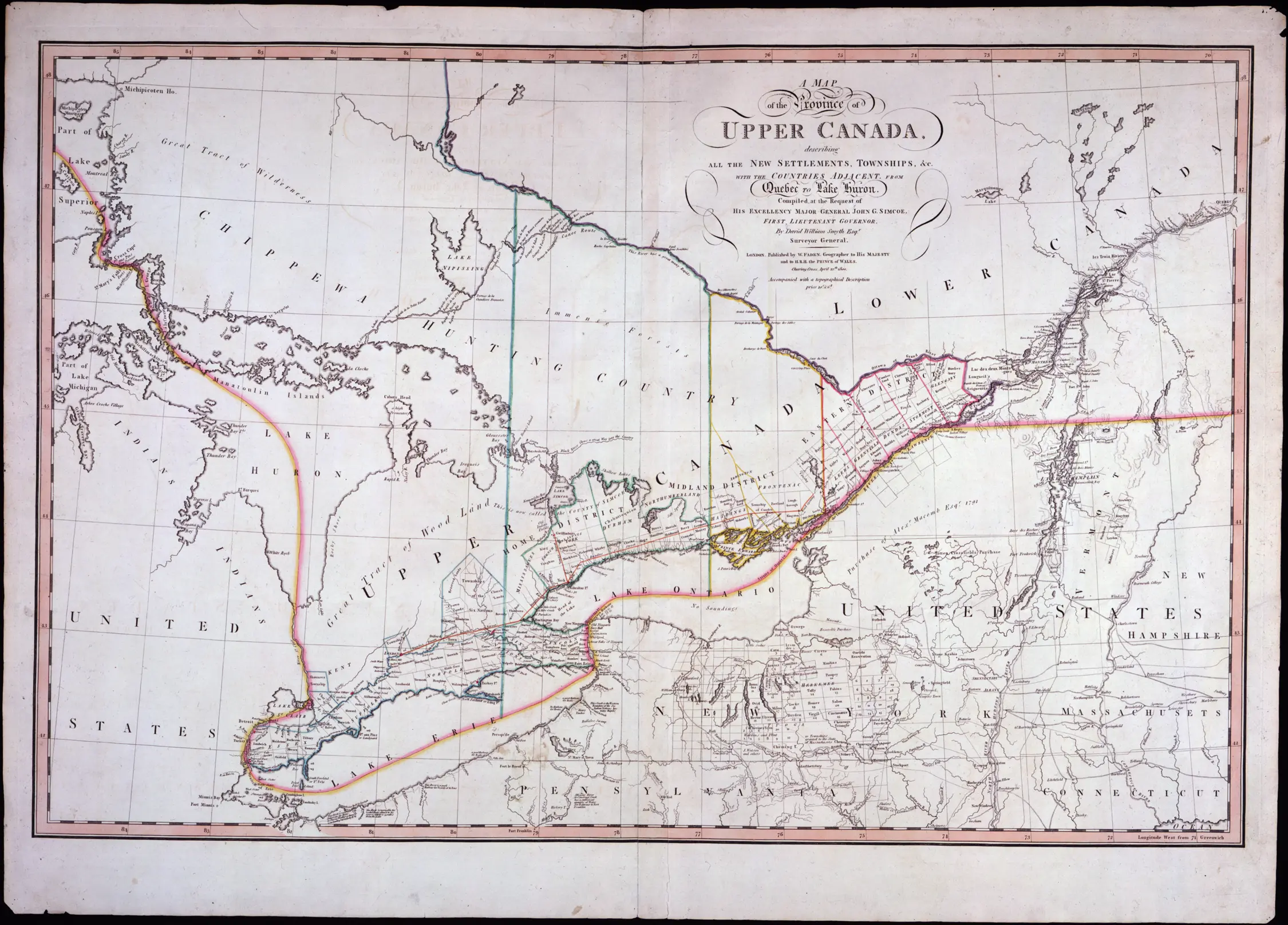Ontario maps
Find maps showing the evolution of Ontario boundaries, including districts, townships and regions.

Topic in development
We are currently developing this topic. You can access an archived version of our Ontario maps page on Archive-it.org.
Note: some links on this page may not work. Contact us if you need help finding resources from our former website.
